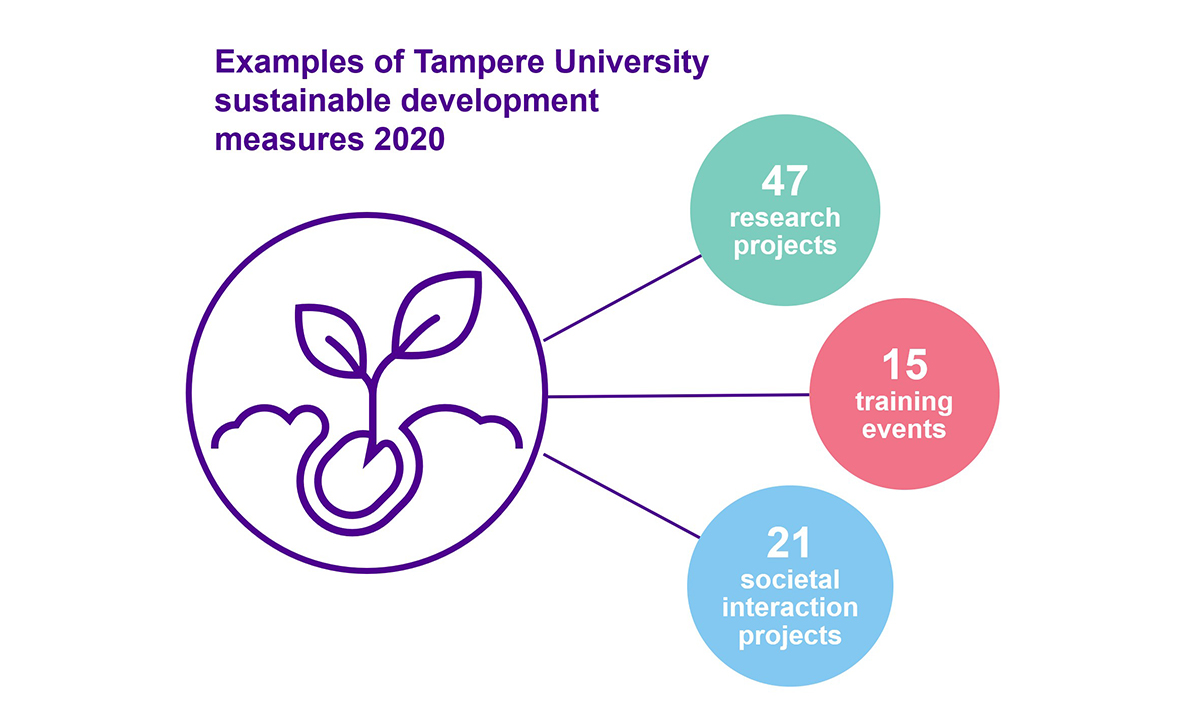The Sustainable Development Report of Tampere University is the result of a pilot project and still in many ways a work in progress. We hope the report evolves into an important avenue for the members of our community to share information about their expertise and celebrate their achievements. When compiling this report, we took inspiration from conventional responsibility reports but chose to highlight the sustainability achievements and progress made by our community instead of opting for a more traditional reporting format.
This report is based on the UN Sustainable Development Goals (SDGs), which provide a common language for talking about sustainability across geographic regions and disciplinary boundaries. Among other things, the University of Manchester’s extensive SDG report set an example for this report.

We recognise that the classification of activities under the SDG categories is somewhat artificial: the activities described in this report are grouped into a single category, which we considered was the best fit, although they usually have an impact on multiple SDGs. However, the choices were made with the best of intentions: as there may be people who are not yet familiar with the SDGs, we have opted to maximise clarity and understandability.
Tampere University’s sustainable acts and activities in 2020 categorized
Community activity was the key
After asking our community for the sustainability-promoting acts they did in 2020, we have compiled a brief description of the activities, identified contact persons and created a web page that offers more information. We grouped the activities into SDG categories based on their primary impact. In addition, we classified the activities based on the social, cultural, environmental and economic dimensions of sustainability and indicated whether the reported activities relate to our research, education or societal impact.
Please consider the following points when reading this report:
- It has been necessary to make some simplifications in the report for purposes of clarity. The boundaries between research, education and societal impact are not necessarily clear-cut, and some of the reported activities could be grouped under social, cultural, environmental and economic sustainability. The classification of activities into the SDG categories is especially challenging because the majority of activities have an impact on multiple SDGs. We opted for a simplified reporting model in case there are people who are not yet that familiar with the SDGs.
- The report is a collection of stories describing both large-scale and small-scale sustainability actions, which may seem confusing. Still, we wanted the report to highlight the breadth and depth of our community’s sustainability actions, both the small steps and the major international research projects.
- We are aware that this is by no means an exhaustive report, although creating a comprehensive report may not be possible or even necessary. We hope this report encourages you to reflect on the impact of your activities on the SDGs, sheds light on the manifold nature of sustainability actions and perhaps helps you find potential new collaboration partners.
Data in Excel
The data from the Tampere University sustainability report 2020 has been collected in an easy to compare and sortable file format.
